We use information collected through cookies and similar technologies to improve your experience on our site, analyze how you use it and for marketing purposes.
Your privacy settings
We and our partners use information collected through cookies and similar technologies to improve your experience on our site, analyze how you use it and for marketing purposes. Because we respect your right to privacy, you can choose not to allow some types of cookies. However, blocking some types of cookies may impact your experience of the site and the services we are able to offer. In some cases, data obtained from cookies is shared with third parties for analytics or marketing reasons. You can exercise your right to opt-out of that sharing at any time by disabling cookies.
Manage Consent Preferences
Necessary
Always ON
These cookies and scripts are necessary for the website to function and cannot be switched off. They are usually only set in response to actions made by you which amount to a request for services, such as setting your privacy preferences, logging in or filling in forms. You can set your browser to block oralert you about these cookies, but some parts of the site will not then work. These cookies do not store any personally identifiable information.
Analytics
These cookies and scripts allow us to count visits and traffic sources, so we can measure and improve the performance of our site. They help us know which pages are the most and least popular and see how visitors move around the site. All information these cookies collect is aggregated and therefore anonymous. If you do not allow these cookies and scripts, we will not know when you have visited our site.
Embedded Videos
These cookies and scripts may be set through our site by external video hosting services likeYouTube or Vimeo. They may be used to deliver video content on our website. It's possible for the video provider to build a profile of your interests and show you relevant adverts on this or other websites. They do not directly store personal information, but are based on uniquely identifying your browser and internet device. If you do not allow these cookies or scripts it is possible that embedded video will not function as expected.
Google Fonts
Google Fonts is a font embedding service library. Google Fonts are stored on Google's CDN. The Google Fonts API is designed to limit the collection, storage, and use of end-user data to only what is needed to serve fonts efficiently. Use of Google Fonts API is unauthenticated. No cookies are sent by website visitors to the Google Fonts API. Requests to the Google Fonts API are made to resource-specific domains, such as fonts.googleapis.com or fonts.gstatic.com. This means your font requests are separate from and don't contain any credentials you send to google.com while using other Google services that are authenticated, such as Gmail.
Marketing
These cookies and scripts may be set through our site by our advertising partners. They may be used by those companies to build a profile of your interests and show you relevant adverts on other sites. They do not store directly personal information, but are based on uniquely identifying your browser and internet device. If you do not allow these cookies and scripts, you will experience less targeted advertising.
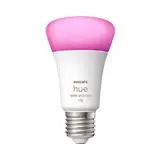
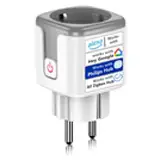
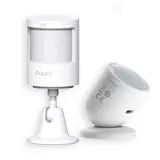
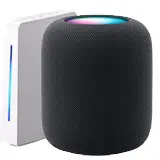
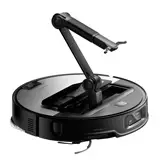

First steps to automate your home
Imagine coming home to lights that turn on automatically, your favorite music starts playing, and the temperature is just right? Home automation isn't a futuristic fantasy anymore; it's here, it's affordable, and it can make your life more comfortable and efficient. But where do you begin? This article will guide you step-by-step through your first steps toward a smart home.
Starting your smart home journey
Domotics, or home automation, consists of controlling the devices in your home remotely or automatically. This can include lights, locks, thermostats, appliances and even blinds. The goal is simple: to make your life easier, save energy and improve security. The use of smart home devices has increased in recent years, providing users with greater control and convenience. In addition, many of these technologies are integrated with each other, allowing centralized and efficient management. With the advance of artificial intelligence, these systems are increasingly intuitive and adapt to the routines and preferences of their users.
The first crucial step is planning. Before buying any smart device, define your needs and priorities. What do you want to automate first? What problems do you want to solve? These questions will help you focus your efforts and avoid unnecessary expenses.
Identifying your automation needs
Think about the areas of your home you'd like to improve. Are you worried about security? Do you want to lower your energy bill? Looking for more comfort and convenience? Here are some common areas where home automation can make a difference:
Once you have a clear idea of your needs, you can start researching the options available on the market.
Choosing your first smart devices
The smart device market is vast and can be overwhelming. Here are some popular and easy-to-set-up options to get you started:
Smart Lighting: The Ideal Starting Point
Smart bulbs are a great way to get started with home automation. They're easy to install and offer many advantages:
Popular brands include Philips Hue, TP-Link Kasa, and LIFX. Research the features of each and choose the one that best suits your needs and budget.
Smart Security: Protecting Your Home
Security is a common concern for many homeowners. Security cameras and smart locks can give you peace of mind and control over your home, even when you're away.
Some smart security brands to consider are Ring, Arlo, and Nest.
Smart Climate Control: Saving Energy and Increasing Comfort
Smart thermostats let you control your home's temperature remotely and automatically. They can learn your preferences and adjust the temperature to your schedule, saving you energy and money.
Leading brands in smart thermostats include Nest, Ecobee, and Honeywell.
Choose the right smart home hub for your home
Many smart devices require a "hub" to connect to each other and communicate with your smartphone. A hub acts as the brain of your smart home, letting you control all your devices from a single app.
Some of the most popular hubs are:
When choosing a hub, consider the following factors:
Setting up your home network for automation
A stable and reliable Wi-Fi network is fundamental for the smooth operation of your smart home. Before you start installing smart devices, make sure your Wi-Fi network is strong enough and has adequate coverage throughout your home.
If you're having coverage problems, consider the following options:
It's also important to protect your Wi-Fi network with a strong password and enable WPA2 or WPA3 encryption.
Best practices for home automation
To get the most out of your smart home, follow these best practices:
Home Automation Privacy Considerations
It's crucial to be aware of the privacy implications of automating your home. Many smart devices collect data about your behavior and usage. Be sure to read manufacturers' privacy policies and take steps to protect your privacy.
Some recommendations to protect your privacy:
Troubleshooting Common Home Automation Issues
While home automation can be incredibly convenient, sometimes problems can arise. Here are some common problems and how to fix them:
The Future of Home Automation
Home automation is constantly evolving. In the future, we can expect to see smarter, more integrated, and easier-to-use devices. Artificial intelligence will play an increasingly important role in home automation, allowing devices to learn your preferences and automatically adapt to your needs.
We can also expect to see greater integration of home automation with other systems, such as solar energy and water management. This will allow us to create more sustainable and efficient homes.
Conclusion: Take the first step toward your smart home
Automating your home may seem like a daunting task, but it doesn't have to be. Start with simple devices like smart light bulbs or a smart thermostat. As you get more comfortable, you can add more devices and explore the possibilities of home automation. In addition, there are many applications to automate your home that make it easy to manage all these devices from your smartphone. With these apps, you can program schedules, create routines and control your home environment with just one click. Don't hesitate to research and test different options to find the one that best suits your needs. Also, consider integrating devices that facilitate the maintenance of your home, such as robot vacuums that can be programmed to clean while you are away. Not only will this save time, but it will also allow you to implement 'cleaning while you're away'.strategies for efficient cleaningwithout additional effort. Over time, you will enjoy a more comfortable and easier to manage home, adapted to your daily needs.
Remember that the key is in planning, research, and patience. Don't rush into buying all the devices at once. Start slowly and experiment with different options until you find the ones that best suit your needs and lifestyle.
Start today and discover the benefits of a smart home! Share this article with your friends and family who are interested in home automation. Leave us a comment with your questions and experiences!
Related Posts
How much does it cost to automate a house? Budget-friendly and premium options
Dreaming of a smart home? Lights that turn on by themselves, thermostats that adjust to your liking and blinds that lower at dusk. Home automation is no longer a thing of the future, it's the present! But how much does it cost to make this dream a reality? The answer, like almost everything in life, is: it depends. Let's ...
TOP 10 Must-Have Smart Home Devices
Do you dream of a home that understands you, adapts to your needs and makes your life easier? Home automation, or smart homes, are no longer a thing of the future. They are an accessible reality that can transform your daily life. In this article, we present the 10 must-have devices to turn your home into a smart home.
What is a smart home and how can it improve your life?
Imagine this: You wake up to sunlight streaming gently through the window. The coffee maker is already brewing your favorite coffee and the music that encourages you to start the day begins to play. All this, without you having to lift a finger. Does it sound like science fiction? No! It's the reality of a home ...
How to Choose a Smart Home System: A Beginner's Guide
Do you dream of a home that responds to your needs? Can you imagine controlling the lights, temperature and even the coffee maker from your phone? Welcome to the world of smart homes! Choosing the right system may seem complicated, but don't worry, this guide is designed for beginners like you. What is a smart home? A ...